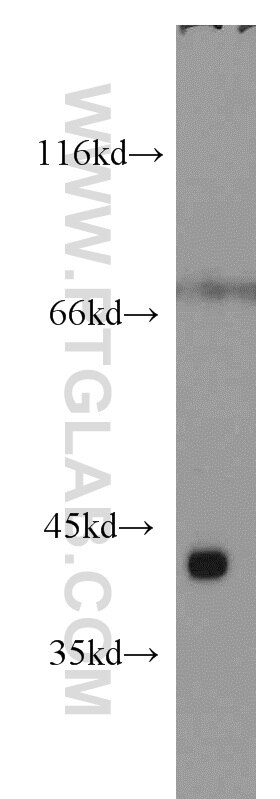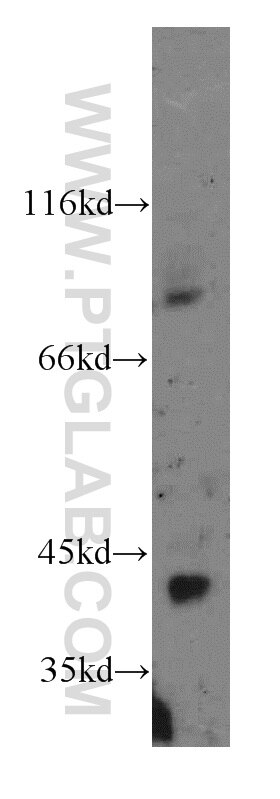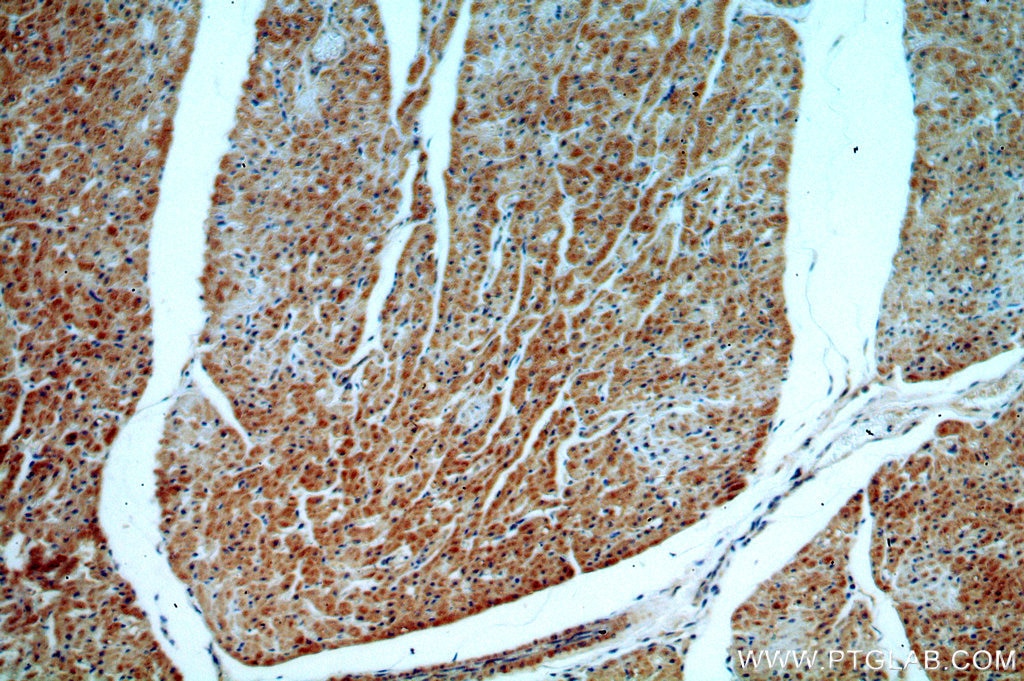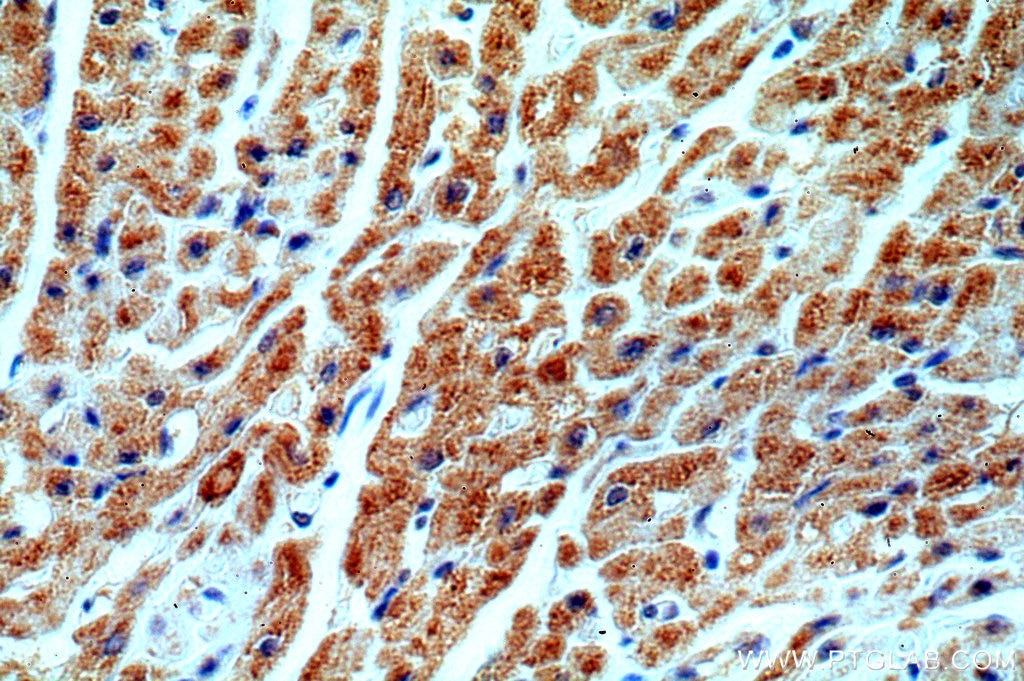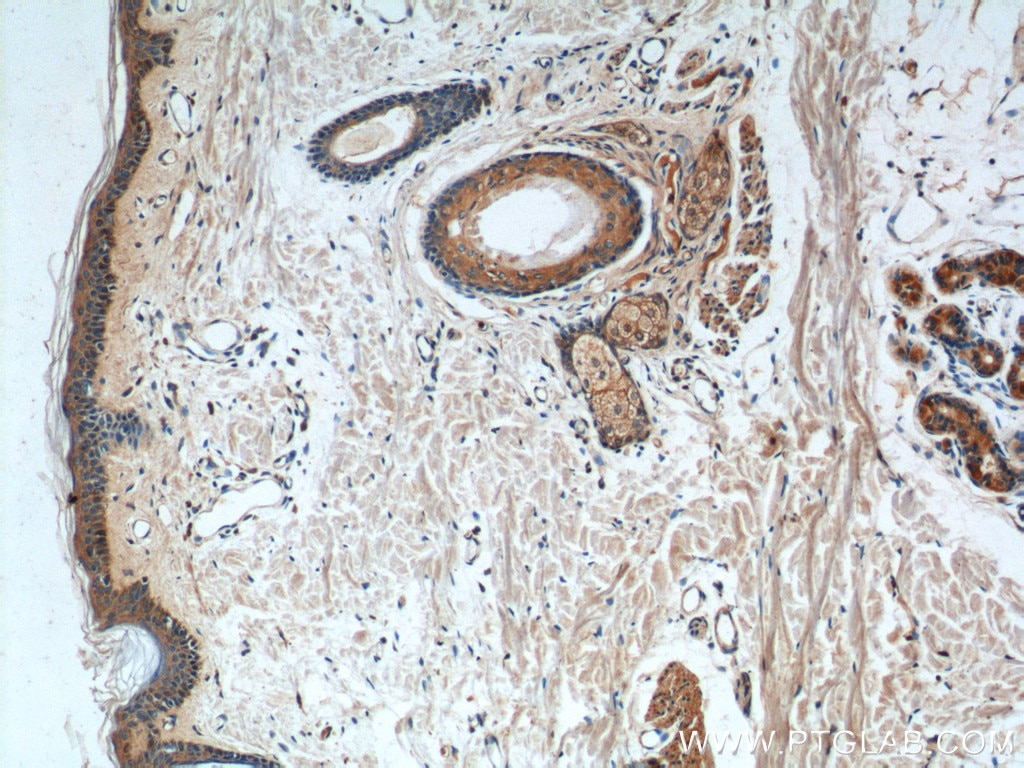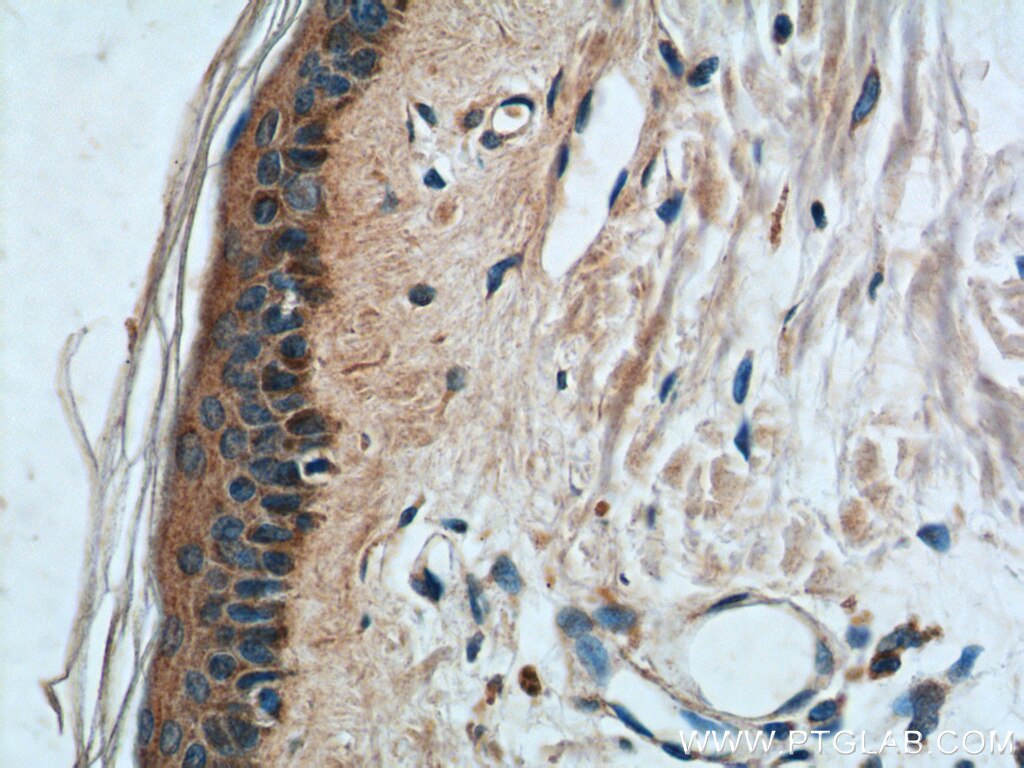ST8SIA2-Specific Polyklonaler Antikörper
ST8SIA2-Specific Polyklonal Antikörper für WB, IHC, ELISA
Wirt / Isotyp
Kaninchen / IgG
Getestete Reaktivität
human, Maus, Ratte
Anwendung
WB, IHC, IF, ELISA
Konjugation
Unkonjugiert
Kat-Nr. : 19736-1-AP
Synonyme
Geprüfte Anwendungen
| Erfolgreiche Detektion in WB | Mausherzgewebe |
| Erfolgreiche Detektion in IHC | humanes Herzgewebe, humanes Hautgewebe Hinweis: Antigendemaskierung mit TE-Puffer pH 9,0 empfohlen. (*) Wahlweise kann die Antigendemaskierung auch mit Citratpuffer pH 6,0 erfolgen. |
Empfohlene Verdünnung
| Anwendung | Verdünnung |
|---|---|
| Western Blot (WB) | WB : 1:200-1:1000 |
| Immunhistochemie (IHC) | IHC : 1:20-1:200 |
| It is recommended that this reagent should be titrated in each testing system to obtain optimal results. | |
| Sample-dependent, check data in validation data gallery | |
Veröffentlichte Anwendungen
| WB | See 3 publications below |
| IHC | See 2 publications below |
| IF | See 2 publications below |
Produktinformation
19736-1-AP bindet in WB, IHC, IF, ELISA ST8SIA2-Specific und zeigt Reaktivität mit human, Maus, Ratten
| Getestete Reaktivität | human, Maus, Ratte |
| In Publikationen genannte Reaktivität | human, Maus, Ratte |
| Wirt / Isotyp | Kaninchen / IgG |
| Klonalität | Polyklonal |
| Typ | Antikörper |
| Immunogen | Peptid |
| Vollständiger Name | ST8 alpha-N-acetyl-neuraminide alpha-2,8-sialyltransferase 2 |
| Berechnetes Molekulargewicht | 42 kDa |
| Beobachtetes Molekulargewicht | 42 kDa |
| GenBank-Zugangsnummer | NM_006011 |
| Gene symbol | ST8SIA2 |
| Gene ID (NCBI) | 8128 |
| Konjugation | Unkonjugiert |
| Form | Liquid |
| Reinigungsmethode | Antigen-Affinitätsreinigung |
| Lagerungspuffer | PBS with 0.02% sodium azide and 50% glycerol |
| Lagerungsbedingungen | Bei -20°C lagern. Nach dem Versand ein Jahr lang stabil Aliquotieren ist bei -20oC Lagerung nicht notwendig. 20ul Größen enthalten 0,1% BSA. |
Hintergrundinformationen
ST8SIA2, also named as SIAT8B and STX, belongs to the glycosyltransferase 29 family. ST8SIA2 may transfer sialic acid through alpha-2,8-linkages to the alpha-2,3-linked and alpha-2,6-linked sialic acid of N-linked oligosaccharides of glycoproteins and may be involved in PSA (polysialic acid) expression. The antibody is specific to ST8SIA2.
Protokolle
| PRODUKTSPEZIFISCHE PROTOKOLLE | |
|---|---|
| WB protocol for ST8SIA2-Specific antibody 19736-1-AP | Protokoll herunterladen |
| IHC protocol for ST8SIA2-Specific antibody 19736-1-AP | Protokoll herunterladenl |
| STANDARD-PROTOKOLLE | |
|---|---|
| Klicken Sie hier, um unsere Standardprotokolle anzuzeigen |
Publikationen
| Species | Application | Title |
|---|---|---|
Nat Neurosci Single-cell genomics of the mouse olfactory cortex reveals contrasts with neocortex and ancestral signatures of cell type evolution | ||
Oxid Med Cell Longev Long Noncoding RNA TUG1 Aggravates Cerebral Ischemia/Reperfusion Injury by Acting as a ceRNA for miR-3072-3p to Target St8sia2. | ||
J Cell Sci Prolyl endopeptidase is involved in the degradation of neural cell adhesion molecules in vitro. | ||
Brain Res PSA modification of NCAM supports the survival of injured retinal ganglion cells in adulthood. | ||
Front Immunol A novel ganglioside-related risk signature can reveal the distinct immune landscape of neuroblastoma and predict the immunotherapeutic response |
